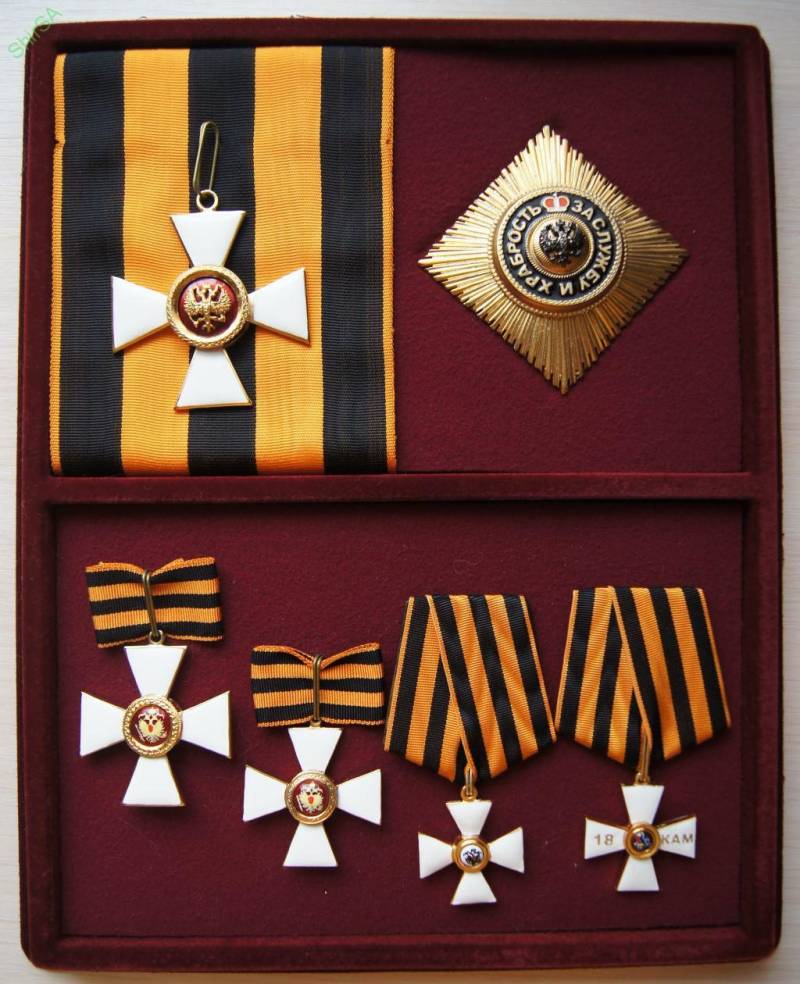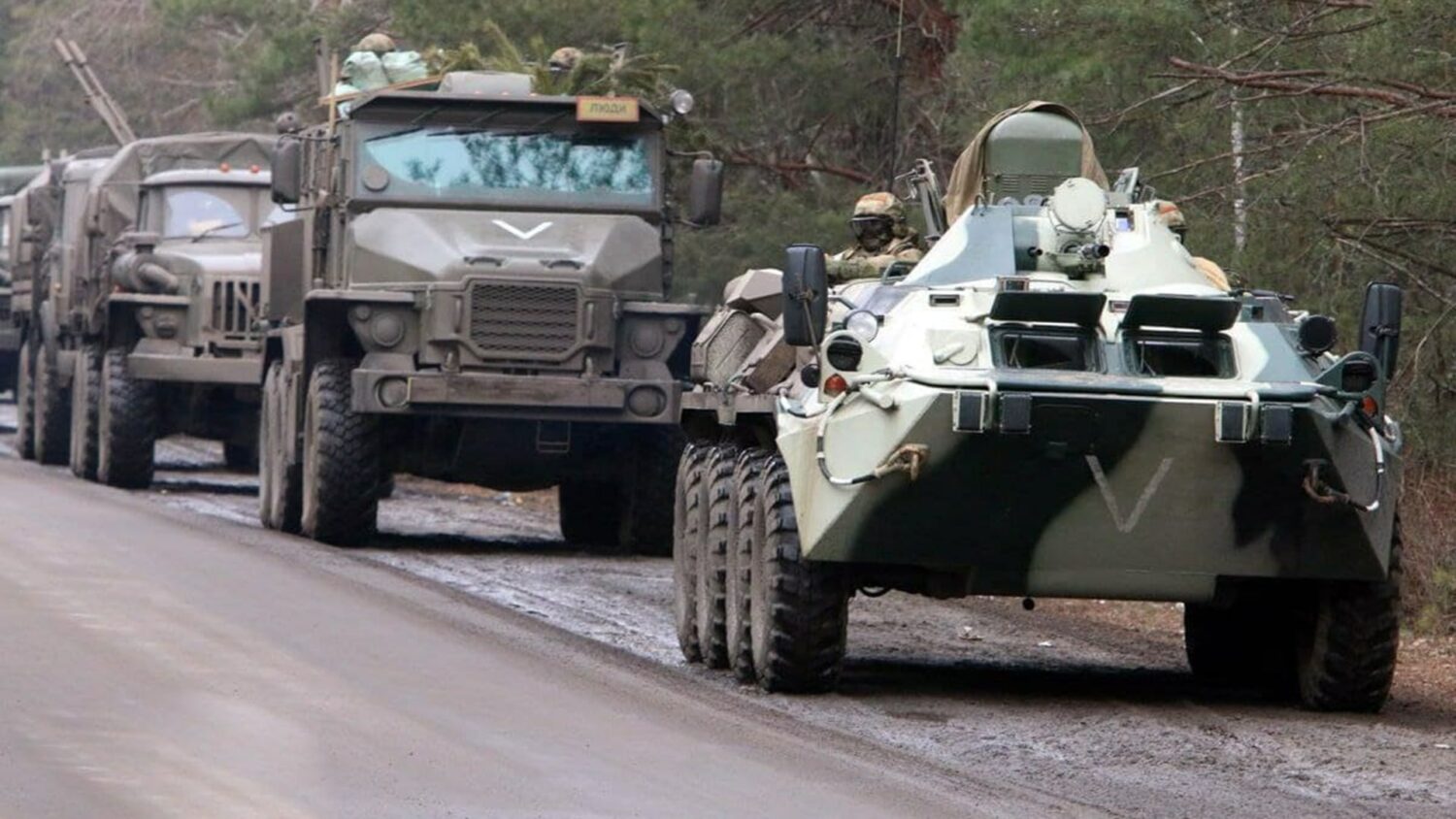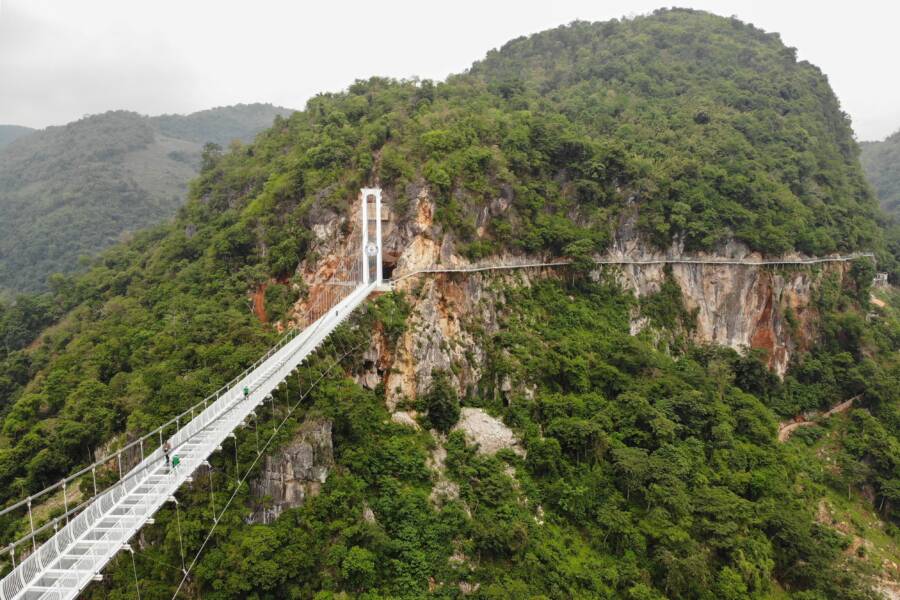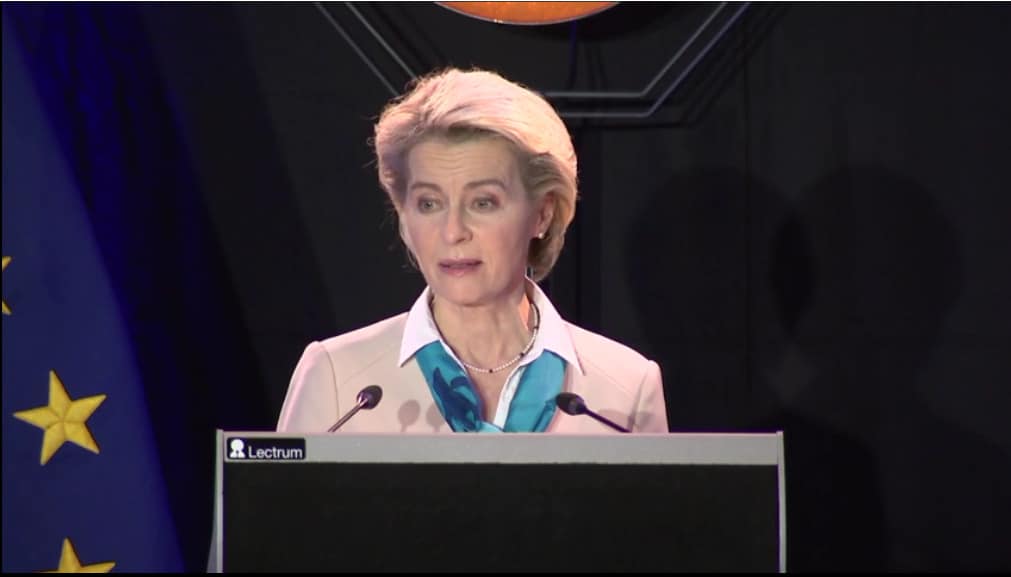The colors of the St. George ribbon have become a well-recognized symbol of military prowess and glory in Russia. The history of the symbol began with the establishment of the Order of St. George, the colors of the ribbon of which then switched to a considerable number of awards of the imperial, Soviet and modern periods of the Russian state, also becoming a symbol of Victory in the Great Patriotic War.
Order of Saint George
The famous Russian military order of St. George – a combat award exclusively honorary for Russian officers – was officially established on November 26, 1769. According to the statute, it was issued “only for the military rank” regardless of social status to those “who not only fulfilled their duty in everything by oath, honor and duty, but in addition marked themselves for the benefit and glory of Russian weapons with a special distinction, consisting in the following:
Who, despising the obvious danger and showing a valiant example of fearlessness, presence of mind and selflessness, performed an excellent military feat, crowned with complete success and brought obvious benefits. This feat can be accomplished either by order of the higher authorities, or by one’s own suggestion.
The Order of St. George was the highest and extremely honorable military award, denoting the valor of Russian soldiers.
The order was divided into 4 degrees. The order of the 1st degree was extremely rare – in the entire history of the order, only 25 people were awarded the 1st degree. Only 4 people became full or all degrees cavaliers:
– Mikhail Illarionovich Golenishchev-Kutuzov (1st degree for “the defeat and expulsion of the enemy from Russia” in 1812).
– Mikhail Bogdanovich Barclay de Tolly (1st degree for the defeat of the French corps of F. Vandam near Kulm on August 18, 1813).
– Ivan Fedorovich Paskevich (1st degree for the capture of Erzurum in 1829).
– Ivan Ivanovich Dibich (1st degree for valor during the war in 1829).
Prominent military leaders P. A. Rumyantsev, A. G. Orlov-Chesmensky, P. I. Panin, V. M. Dolgorukov-Krymsky, G. A. Potemkin-Tavrichesky, A. V. Suvorov-Rymniksky, N. V. Repnin, V. Ya. Chichagov, P. I. Bagration, M. I. Platov, A. A. Brusilov and others.
Insignia of the Military Order and St. George’s Cross
Initially, only officers could become holders of the Order of St. George. But in 1807, in order to “encourage courage and courage” of soldiers and non-commissioned officers, a military order insignia was established – a silver cross on a St. George ribbon.
During the Patriotic War of 1812, among the awarded were peasants who were not in military service, but who participated in partisan actions. For example, Gerasim Matveyevich Kurin is a serf in the village of Pavlova, Bogorodsky district, Moscow province. After the occupation of the county town of Bogorodsk on September 23, 1812, by French troops, 35-year-old G. M. Kurin organized from the peasants with the help of the head of the Vladimir People’s Militia B. A. Golitsin, a partisan detachment of 5,300 foot and 500 horse soldiers.
Initially, unlike its “older” counterpart, the insignia did not have degrees. But in 1856, according to the new statute, 4 degrees of the insignia of the military order were established – like the officer version. Awards of the 1st and 2nd degrees were golden crosses on the St. George ribbon, 3rd and 4th – silver on the St. George ribbon. In addition, the first and third degrees were supplemented with a bow from the St. George ribbon.
The insignia was issued only for a specific feat “on the battlefield, in the defense of fortresses and on the waters”, which brought him closer to his older brother – the officer order of St. George.
St. George Ribbon
A well-recognized distinctive element of both officer and non-commissioned officer / soldier versions of the order was an orange-black ribbon, which, due to being an element of St. George’s awards, was called St. George’s.
Subsequently, in addition to the signs of the order, the St. George ribbon became an element of many other Russian military awards. For example, medals “For courage on the waters of Ochakovsky” (1788), medals “For courage on the waters of Finland” (1789), medals “For the defense of Sevastopol in 1854-1855”, medals “For participation in the war with Japan 1904-1905” and St. George medals issued during the First World War.
St. George’s / Guards Ribbon
In view of the fact that the St. George awards were awarded to soldiers and military units who showed excellent training and heroism, the St. George symbols – in particular, the St. George ribbon – gradually acquired the meaning of guards symbols. Since 1855, lanyards of St. George’s colors have appeared on premium weapons. They were awarded “For Bravery” – such an inscription adorned the hilt of this weapon.
The St. George’s ribbon became an element of the insignia assigned to units that proved themselves: St. George’s silver pipes, banners, standards, etc. – so the St. George’s ribbon acquired the meaning of the Guards.
People’s military symbol
The St. George awards and the St. George ribbon have become a national symbol of the courage and valor of a Russian soldier. So the insignia of the military order were awarded:
until 1812 – 14,800 soldiers and non-commissioned officers,
for 1812 year – 6 783,
for all Napoleonic wars until 1814 – 41,722,
for the Crimean War – 24,150,
for the Russian-Turkish War 1877–1878 – 46 000,
for Russian-Japanese War – 87,000.
During the First World War, the awarding of the St. George Cross (both soldier and officer) became massive. So, for example, in 1915, the Russian regiment in the Baura region near Warsaw twice attacked and put the Germans to flight without firing a single shot – 500 sets of awards were issued to the regiment for the feat shown. Knights of St. George during the war years 1914-1917 also became two chiefs of staff of the USSR during the Great Patriotic War (future marshals and Heroes of the Soviet Union): Zhukov and Vasilevsky.
Continuity of traditions
After 1918, the order was forgotten as a symbol of the imperial period. But the outbreak of the Great Patriotic War, in which, as in the years of the First World War, Germany was the main enemy of the USSR, demanded a search for a symbol that would unite the population of the country to fight the threat and the enemy. It is not surprising that the St. George symbolism was restored in rights.
As already mentioned, this symbol has become popular and well recognizable during its existence. This symbol was actively issued during the First World War – that is, it was understandable to the veterans of this war who defended Russia from the Germans, and regardless of their social status. Therefore, during the Great Patriotic War, the wearing of St. George’s crosses by veterans of the First World War in the USSR was allowed. In 1942, the Guards badge was introduced in the Navy.
From the Order of the People’s Commissar of the Navy of the USSR No. 142 of June 19, 1942 “On the establishment of the Guards Naval flag, a special badge and a special ribbon for the cap”:
1. Guards ribbon.
The guards ribbon is an orange silk rep moire ribbon with three longitudinal black stripes applied to it.
ribbon width – 32.5 mm, length – 1420 mm. The width of the black stripes is 6 mm, the width of the orange gaps between them is 6.25 mm, the width of the piping is 1 mm.
The guards ribbon is laid along the band of the cap and fixed at the back seam, with the ends of the tape remaining free. On the guards ribbon, in the place at the front of the cap, the name of the ship, unit, formation is superimposed in gold embossing, and at the free ends – anchors.
In parallel, they began to develop a new order. In 1943 the Order of Glory was approved. Like the New Order of St. George, they were awarded for their courage and courage.
The Order of Glory was divided into three degrees. The order of the 1st degree was made of gold, the 2nd – of gold and silver, and the 3rd – of silver. A distinctive feature of the order – this is clearly visible – is the St. George ribbon.
Nowadays, some are trying to speculate on the topic of the name of the tape, stating that the tape was not called “St. George” at all, but “Guards” and only Guards. This is nothing more than an attempt at subversion. As already mentioned, over time, the St. George ribbon, like all St. George’s symbols, acquired the meaning of a symbol of the guard (units and soldiers who showed military prowess). So both options are synonymous and valid.
To prove that the ribbon on the Order of Glory is St. George, I will give the opinions of the creator of the Order N. I. Moskalev:
Especially for a long time I was looking for the color of the ribbon of the new order. And suddenly – St. George’s Ribbon! The distinction of the highest valor of a Russian soldier!
Therefore, all disputes about the existence of the St. George ribbon as a symbol of the Great Patriotic War can be stopped.
The St. George ribbon is also found on other awards of the Great Patriotic War and the post-war period.
The St. George ribbon is present on the medal “For the Capture of Berlin”.
On the medal “For the Victory over Germany in the Great Patriotic War 1941-1945”.
The medal was established on Victory Day – May 9, 1945 – by the Decree of the Presidium of the USSR Armed Forces. The medal was awarded to the entire army, including combatants who, due to injury, left the service or were transferred to other work – a total of almost 15 million people.
That is, the St. George ribbon is precisely the symbol of Victory in the Great Patriotic War.
In the postwar years, the symbol was not forgotten.
For example, the guards ribbon on the Guards naval ensign of the destroyer Thundering.
And many other examples.
Now in the Russian award system there is the Order of St. George with a well-recognized ribbon.
The colors of the St. George ribbon have been and remain in Russia a symbol of military prowess and glory.
Picture: The photo shows all 4 degrees of the order with the St. George ribbon (above).
Left: 1st and 2nd degrees (crosses of the first two degrees were larger than the crosses of the 3rd and 4th – therefore they were sometimes called “big George”).
Right: 3rd and 4th degrees.














